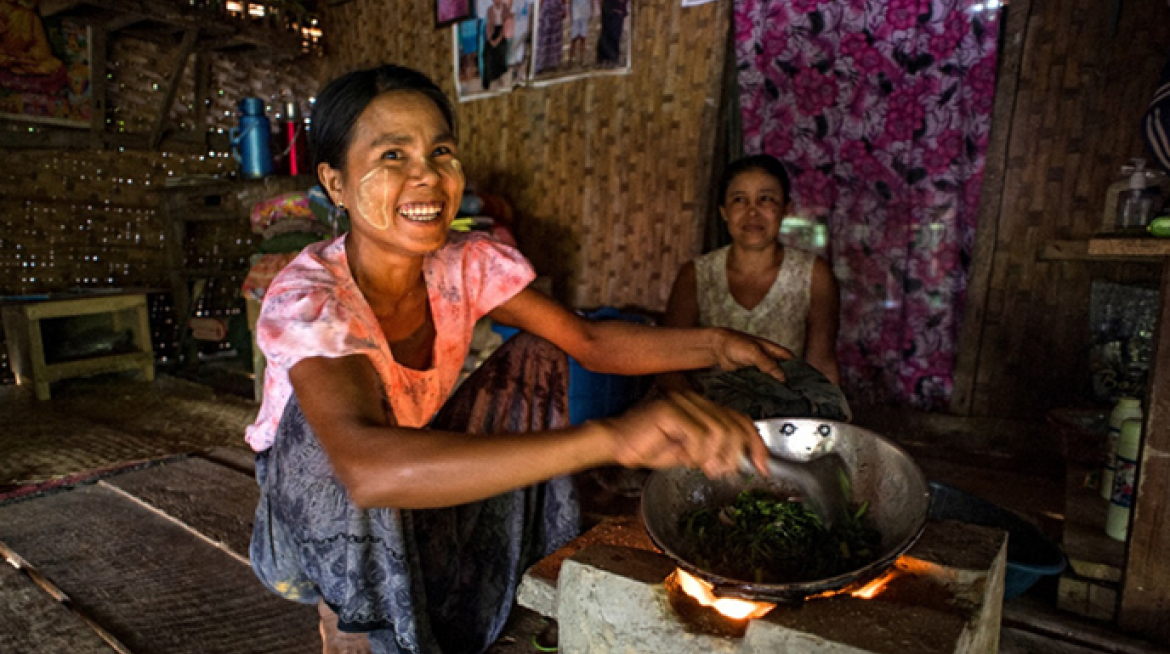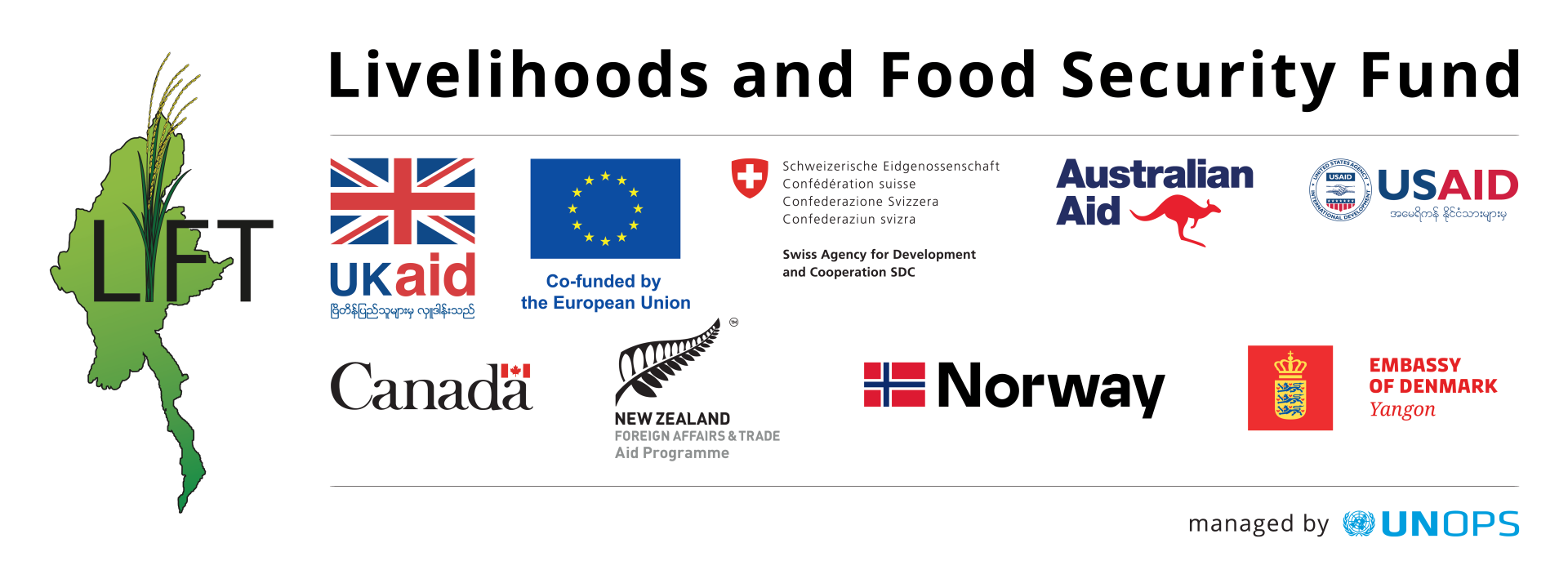
In the remote heart of central Rakhine State a community has galvanized to overcome adversity, writes Jennifer Macintyre, Communications Officer for the Tat Lan Programme.
Kyein Chaung is an immaculate bamboo-fenced village, six hours away from Sittwe, when travelling by fast jet boat up the Myebon River.
People here survive on 3,000 kyats (USD$3) a day as paddy farmers, fishermen and casual cash-for-work (CfW) labourers who cut wood and bamboo. While it is a subsistence lifestyle, these people are enthusiastic about their a vision for the future.
The Kyein Chaung villagers say their vision developed as they participated in the Tat Lan programme that enabled them to rebuild their drinking pond with the labour of their own hands.

Sein Ma Oo collects water from the pond she helped renovate. Today, Ma Sein is a member of the pond maintenance committee and she expresses pride that her community built the pond themselves. “Next we will build a ladder and finish our fence.”
Tat Lan is a development programme that is building resilience through sustainable food security, and improved livelihoods in four vulnerable Rakhine State Townships: Myebon, Minbya, Kyauk Phyu and Pauk Taw.
The tall, bamboo fences that surround Kyein Chaung symbolize the strength and dignity of this Minbya community, where only see one plastic bag is seen - in the mouth of a dog. Otherwise, this village is pristine, with green leafy vegetable gardens growing inside the bamboo fences.
This community has created order in their village after the chaos cyclone Giri wrought upon their lives in October 2010. Overnight they lost everything. While the wind destroyed their homes and killed their livestock, the sea surge washed away paddy fields, fishing boats, and gouged out the village’s drinking pond.
The Tat Lan staff mobilized the community to rebuild their drinking pond and employed the villagers in a CfW scheme. The chairman of the village development committee is Tin Saw Myint, a CfW labourer, who says the community’s success in rebuilding their pond has galvanized them with a resilient ‘can-do’ attitude.
“I motivate my community. I say to everyone if we all agree, we can do it,” says Tin Saw Myint, whose team of 121 village labourers built the pond in six days, employing an equal number of men and women participants.

“Based on everything we learned renovating our pond, we have applied to the Department of Irrigation for a grant to help us build a paddy field embankment using our own village CfW labourers,” says 47-year-old Tin Saw Myint, expressing the sense of empowerment their success has generated.
“My life is not the same as before Tat Lan,” Tin Saw Myint says. “When the people from Tat Lan advised us to form a Village Development Committee everyone in the village voted, all the community.” At that time, two years ago, Tin Saw Myint was a popular member of the village social committee. “I learn by doing,” says this self-taught leader, who is interested in civil society. “Today, I am a motivator.”
At the village information centre, we meet 25 villagers, women and men who stand and introduce themselves describing the leadership roles they have their community. Some people are members of the school committee or the pond maintenance committee, while others distribute seeds and fertilizer to farmers. Each person stands tall and proud, women equally alongside men.

Guided by their leadership, this community of 1300 people expresses the ability to create their own future.
The Village Township Advisor, U Kyaw Than Chay, says he and Tin Saw Myint work together and liaise with the Minbya township authorities. Working as a team, with their community’s support, they extended their school buildings and the Department of Education approved their upgrade to a high school. They have also secured funding to build a bridge, but U Kyaw Than Chay, says more than infrastructure, the community of 350 households has gained knowledge from Tat Lan.
“We understand the new fisheries law and use legal drift nets. People are planting home gardens, and 119 farmers are using modern techniques from the Farmer Field Schools to plant their paddy with new high yielding seeds.” He smiles and says income from their paddy production and fisheries has increased. The improved fish catch has resulted in better fish paste, and vegetable gardens have increased the variety of nutritious food for all villagers.
Throughout the four Rakhine State townships, the programme has taught 161 villagers to manufacture cement eco-stoves that use only three sticks of wood for a cooking fire, halving the cost of wood.
Frying watercress and garlic on an eco-stove she made herself, Sein Ma Oo laughs with entrepreneurial delight. Her stoves are so efficient and well-made that she receives commissions from villages all over Minbya. Each stove takes three days to make, and she can make six from a 7,000 kyats basket of cement. Her craftsmanship sells at 4,000 kyats a piece, enough money to enable this solo mother to feed her four teenage children. “Before Tat Lan we didn’t eat much fish, but now I can give my children fish each day,” says Sein Ma Oo.
However, it is education that really excites this community’s leader. Tin Saw Myint left school at Grade Eight, so he is excited that his village will soon offer 10th grade education. “I want my seven children to be educated people,” he says, as he inspires his community to live beyond poverty and illiteracy.


